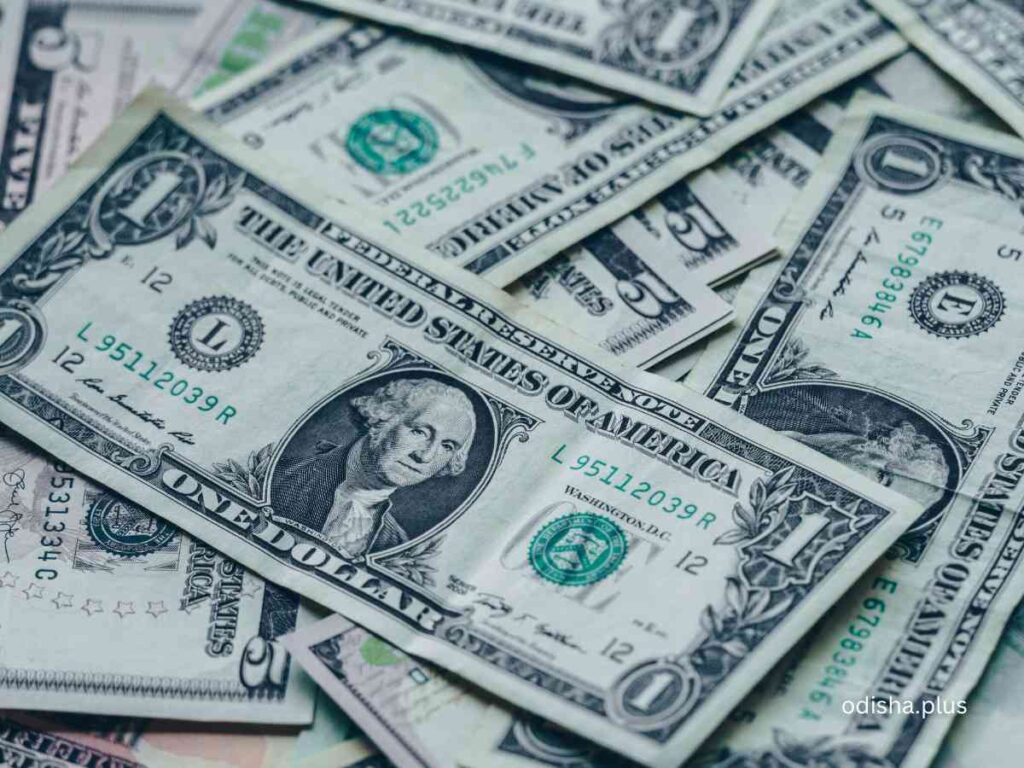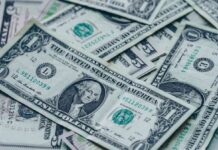When the dollar shrinks, the world is beset with its consequences, and when the dollar swells, the world feels like catching a cold
Suresh Chandra Sarangi

The incredible journey of the Dollar after the Second World War, as the reserve currency of the world and its connection with the global economy, is the story of the success of the postwar financial system. The Almighty Dollar, today, faces an unprecedented risk of losing its luster. With all the attendant risks.
The Dollar has remained the most resilient reserve currency that rules the roost. Whether it is a shopping Mall in Delhi or Chicago, the Chinese central bank or the Nigerian railway, the Iraqi oil fields, the Free Trade, and the world financial system, all depend upon the all-pervasive dollar. Like Napoleon’s statement that when France sneezes, the entire Europe catches a cold, and when there is a spark in France, the entire Europe catches fire. When the dollar shrinks, the world is beset with its consequences, and when the dollar swells, the world feels like catching a cold.
Let us delve into the Breton Woods system of payment settlement mechanism, which is based on the dollar, and defines the strength of related currencies concerning the Dollar. This established the supremacy of the Dollar and emerged as the world currency, which is a standard, and all other existing or future currencies of the world were/are pegged to the dollar. Five key elements of the Bretton Woods system were global integration, creation of new institutions, recapitalization of banks, formulation of fiscal and monetary policy, and finally, establishment of a new world order.
That order provided stability, created a new International Monetary System, and helped promote economic growth and financial stability in the post-World War 2 period. But in 2025, new developments in the USA, in the name of MAGA, make America great again, and trade tariff escalation, imposed by President Donald Trump has shaken the world economy, triggered a trade war, and caused weakness in the reserve currency Dollar and the world simply appears to be degenerating into chaos.
Fear is rising that with the collapse of the dollar, in the aftermath of tremors created by the new trade tariff system, that has come as a shock, this may cause massive withdrawal from the American treasury, with higher bond yields the stock markets may feel the pinch and gradual redemption by Major participant in the US treasury, like Japan and China, the shock may be massive.
Already, people have started questioning the Bretton Woods system and the numero uno status of the American Dollar, The de-dollarisation drama is silently unfolding, in the backdrop of a BRIC currency and the newfound status of China’s Renminbi. The buzz of economic activity has suddenly become silent, and the tug of war between the US and Beijing has resulted in the closure of the factories in China. There prevails an “eerie” silence in world politics and the economy today.
The US financial system’s greatest strength was its resiliency, derived from the mighty Dollar, which has weathered the terrorist attack, the financial system crisis of 2008, and the COVID-19 pandemic. The ability of the dollar to recover from the crash, absorb disruptions, and its tenacity to keep the world economy moving is profound. The Wall Street Journal says that a weak dollar poses a major global risk.
The slide in the global currency would mean pressure on exporters and a hit on the export proceeds of nations. This can be a double whammy in the sense that there will be a shrinkage in the collection of revenues as the export will dwindle on account of higher tariffs, and consequent inflation, and second, a weak dollar means the exporter would be the resultant loser. It would be that the Dollar that drove exports may again be the cause of its decline.
Due to the rapid fall in the dollar, throughout the world, the local currencies would be strengthening against the dollar. The Dollar Index, a yardstick to measure the strength of the dollar against a basket of currencies, started weakening, and from the dollar index of 110 during January 2025, it hit a low of approximately 98 on April 15th.
This fast dollar decline has been historic, and the Dollar index, a measure of the greenback against a basket of currencies, has slipped around 8% this year, the worst decline in four decades. It has hit fresh lows against the Japanese Yen, Euro, and Swiss Francs, Jerome Powell, in his important address in Chicago delineated that, at least, for the present and maybe for a brief period till the trade war continues, there is a good chance of inflation recovering in America and therefore, it may not be possible for a rate cut going ahead.
Forecasting anything under the present volatile situation becomes extremely risky as things are in flux. It is a fact that American expansionism and exceptionalism are under risk/ arrest. America was accumulating the dollars in acquiring it against the bond market. Markets were vulnerable throughout the world, due to inflation, recession, and war terrorist attacks, but the American dollar was strong and strengthening against major currencies.
Ruchir Sharma, the investment banker, sees a seismic shift on account of the Trump tariff, and thus, the dollar may face a major jolt at least in the near term. Piling of Dollars was favorable till now, but is facing the greatest shock of its journey. The dollar, which is overvalued, is reversing its strength. That would be a disappointment. The fact remains that both China and Japan have a greater pie in terms of investment in the American Treasury, and in case they redeem those bonds, what would be the fate of the dollar?
Economists think that Trump can not stop de-dollarisation, and with the onset of a tariff war and a full-blown trade war, the dollar’s share of foreign reserves is going down. Countries like China and, to some extent, India are participants in a new economic shift by having their trade and payment settlement mechanisms through local currencies. That is a direct affront to the Dollar. Moreover, financial innovation and upgradation has it will have an impact on the economy, and because of its economic shift of global proportion, with immediate effect on the dollar. Brics countries’ policy resolution for a shared currency may have a significant impact on the Dollar.
With the onset of the Tariff War and consequent trade war, the Dollar capsized in the intricate web of international finance. With China flexing its muscle by imposing retaliatory tariffs, things have become more impregnated to a major economic shock. With 360 billion dollars in exports to America by China and 760 billion dollars in the American treasury, China seems to be adamant, and a near solution, without the intervention of international organizations, is next to impossible The Dollar, once the king of the universe feels threatened and who knows the fortunes of America and the world financial system may be sealed if the trade war becomes protracted, long drawn, and temperamental.
(The writer is a former General Manager of Bank of India and currently a visiting professor at KIIT School of Management. Views expressed are personal.)

















